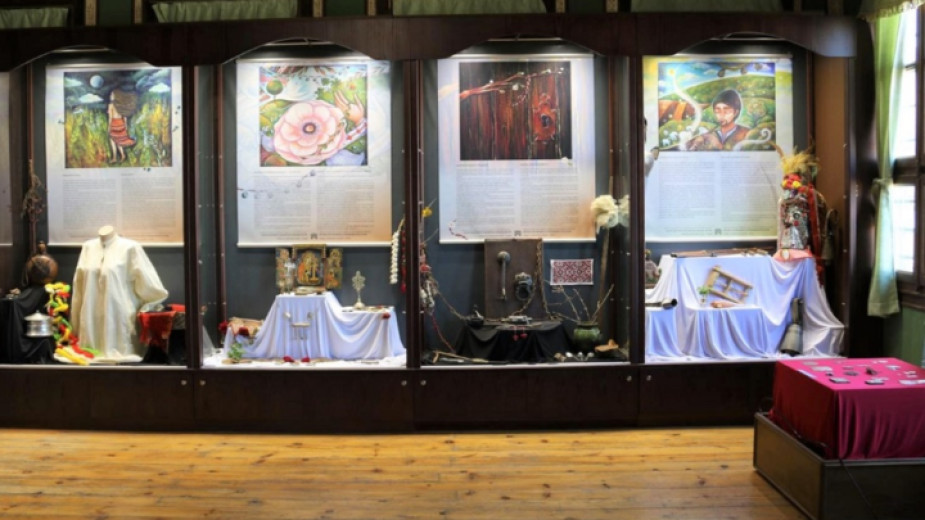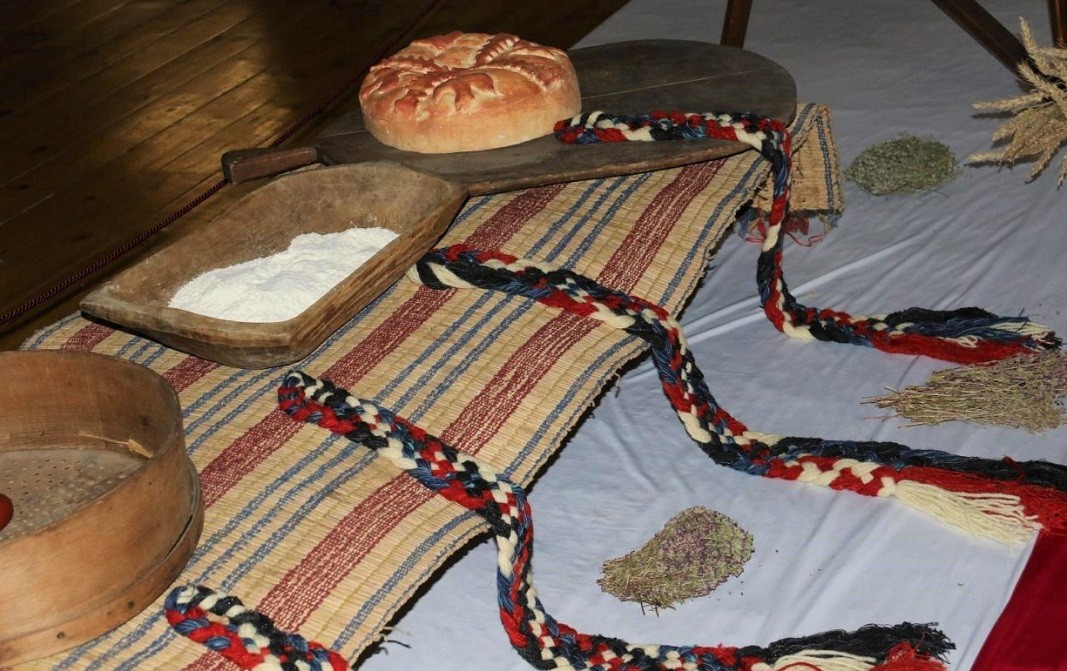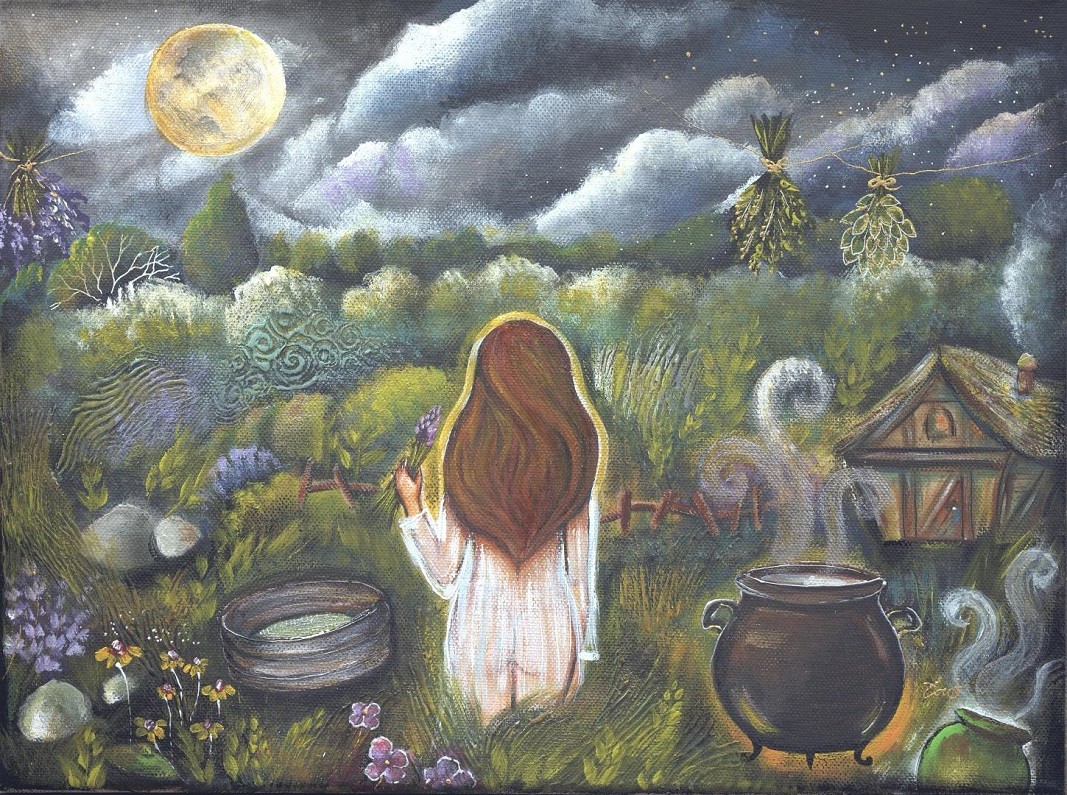 7
7
Magic was part of life for Bulgarians of old, with numerous rituals for fertility, or to ward off disease, or to attract love. What were the beliefs in the Bulgarian lands? What were the characters and the items that played an important role in the lives of the people? The answers to these questions are given by an exposition at the Regional Ethnographic Museum in Plovdiv that transports us to a mysterious world of magic.
“The exhibition “Twining threads, twisting joy and sorrow” is dedicated to magic and all things magical in Bulgarian traditional culture,” explains Bilyana Popova from the Regional Ethnographic Museum in Plovdiv in an interview with Radio Bulgaria’s Desislava Semkovaka. “The title of the exhibition comes from the idea of the threads of human life, of human destiny. There are always at least two threads – good and evil, life and death, happiness and sorrow, magic that does good or magic that does evil.”
The magic involved various acts or rituals in the belief that humans were able to affect other humans, or animals or plants. Bulgarians were familiar with the different faces of magic:

“There was magic intended to ward off danger or disease. Then there was farming magic which was very important and which aimed to bring prosperity from any economic activity within the community. Weather magic would try to affect the elements,” Bilyana Popova explains. “And as for love magic, a girl would turn to sorceresses in the belief that by drinking certain potions or sprinkling the clothes of a young man with “magical water” he would leave the girl he loved and fall in love with her.”
The principal characters featured in the exhibition are the sorceress and the herbalist. According to traditional belief, sorceresses were women who were in some way different socially, they might also have a physical “mark” – an ugly scar on their faces, or they might have a long or a snub nose.
“Every sorceress owned magical things, usually an animal horn, a twig, a cup, a black bird feather. She would cast an evil spell on someone – causing them to abandon their family for example - without even touching them,” she says.

The herbalist was a woman who wielded the secret power of herbs and plants and helped people with her good magic. In her rituals she would use a white chicken feather, an old animal bone, an ear or rye, scissors, a razor, salt, live embers, pebbles brought from the Holy Land. And of course, she had inner knowledge of the messages conveyed by plants when picked on certain days, and at a certain hour, day or night.
There are many nooks and corners in the home that were once considered magical. The threshold was thought to be a sacred place, marking the transition from one stage in life to another. The hearth was also a sacred place, and no magic spells were cast anywhere close to it. Twigs from prickly plants were put up the chimney as a precaution.

“Out of the magical objects, the exhibition features clothing and jewellery, apotropaic items – amulets, lucky charms and magical everyday objects,” Bilyana Popova goes on to say. “Out of the different items of clothing, the most powerful apotropes were the embroidered shirt, the apron and the headscarf. The traditional baggy trousers (poturi) were a symbol of man. Out of the jewellery, the belt buckles were considered to be the most potent item, protecting the future mother and her child.
The household objects that were thought to have magic properties were the spoon as the symbol of prosperity, the distaff and the carrying pole, and the chain hanging over the fireplace. Embroidery was also apotropaic, warding off the evil eye. And one of the most popular magical tokens, martenitsas which protect humans and domestic animals from evil spells and demonic creatures.”
The exhibition, taking place under the programme Heritage 2023 Plovdiv - European capital of culture, 2019 is on at the Regional Ethnographic Museum in the city until 30 June, 2023.
Photos: Regional Ethnographic Museum, Plovdiv
‘The Bulgarian horo is a kind of magic — an enchanted circle that pulses with the unique energy of our spirit, our traditions and our identity,’ says journalist Milena Milotinova, who recently presented her new documentary The Magic of the Bulgarian..
The Eastern Rhodopes come to life in the heart of Sofia – with authentic flavoуrs, music and craftsmanship . Residents of the Bulgaria capital have a chance to immerse themselves in the atmosphere of Momchilgrad Municipality and its cultural and natural..
The second annual Bean and Sausage Festival promises to be an unforgettable celebration of flavour and folklore in Zhitnitsa , a village in southern Bulgaria. On 7 September, the grounds of the local equestrian centre will host food lovers..

+359 2 9336 661
